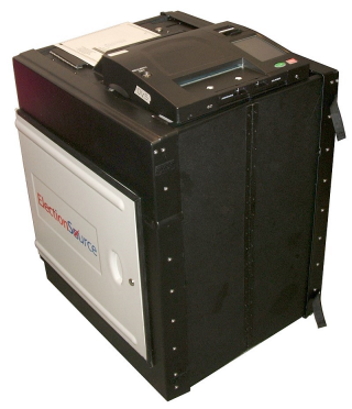
The Boast in the Machine
By Chris Wright
Voting machines caused chaos in Maricopa County, Arizona on Election Day:
“Maricopa County was absolutely insane,” [a voter] said. “I mean, I woke up to messages everywhere about, you know, this polling location is closed, people are in line, they’re kicking them out, this polling location is closed, whatever.”
We “got in line, I got my ballot, filled it out, went to the machines, and it was rejected,” she continued. “Then they said, ‘Go over to the other machine,’ it was rejected…. And finally, after about 10 times, we spoiled it…. And finally, my third ballot and about, you know, five or six times they finally accepted it…. And that was happening all around me.
The problems affected 70 vote centers in the county, seven percent of all in-person votes cast there on Election Day. Most of them still had not been counted a week later.
An election judge in a Republican area in the county believes the problems were intentional. The tabulators were set up for 19-inch ballots, but the ballots were 20 inches and rejected.
I wish I could tell you these were the only problems with machines in this year’s elections, but there were lots more.
Twenty-five thousand votes for a third-party candidate for U.S. Senate in New York disappeared overnight. This has not been explained, as far as I’m aware. Also in New York, identical election results were reported across multiple counties, with Democrats winning every time. How does that happen?
Voting machines went out of service in New Jersey and Texas.
Security features were found to be turned off in several voting machines in Georgia. This was discovered when a fraudulent ballot printed on looseleaf paper turned up. The machines are supposed to detect when the paper does not meet requirements. So who turned off the security features and why?
A Democrat in Colorado was arrested for inserting a USB flash drive into a voting machine during a primary election in June. This is one way to get a machine to flip votes.
We keep hearing that voting machines don’t connect to the Internet and, thus, results can’t be tampered with from the outside, but the Colorado Secretary of State admitted in writing Dominion machines have Wi-Fi connectivity.
An audit in New Mexico last month found a 25 percent difference between machine counts and hand counts in a primary election.
In a Virginia county, it was found the number of votes recorded by scanners was different from the number of paper ballots dropping down into the box below. How does that happen?
None of this inspires confidence, especially when you hear things like Barack Obama saying in 2008 “I tell you what, it helps in Ohio that we got Democrats in charge of the machines.” Or a Dominion voting system executive caught on video explaining to election officials in 2020 how to use the machines to alter election results. Or the director of an electronic voting system company admitting that an entire election in Venezuela was stolen when a million votes were flipped in 2017.
No wonder some people want to get rid of the machines entirely and count paper ballots by hand again, like in France which doesn’t seem to have any trouble getting it done the same day. Short of that, machine certification standards could be tightened, elections officials could do a better job of selecting equipment that actually meets specifications, and machines could be tested more rigorously before elections. Whatever the solution, it’s clear the present state of affairs causes distrust in our elections and is, therefore, untenable.
Published with permission of libertysentinel.com